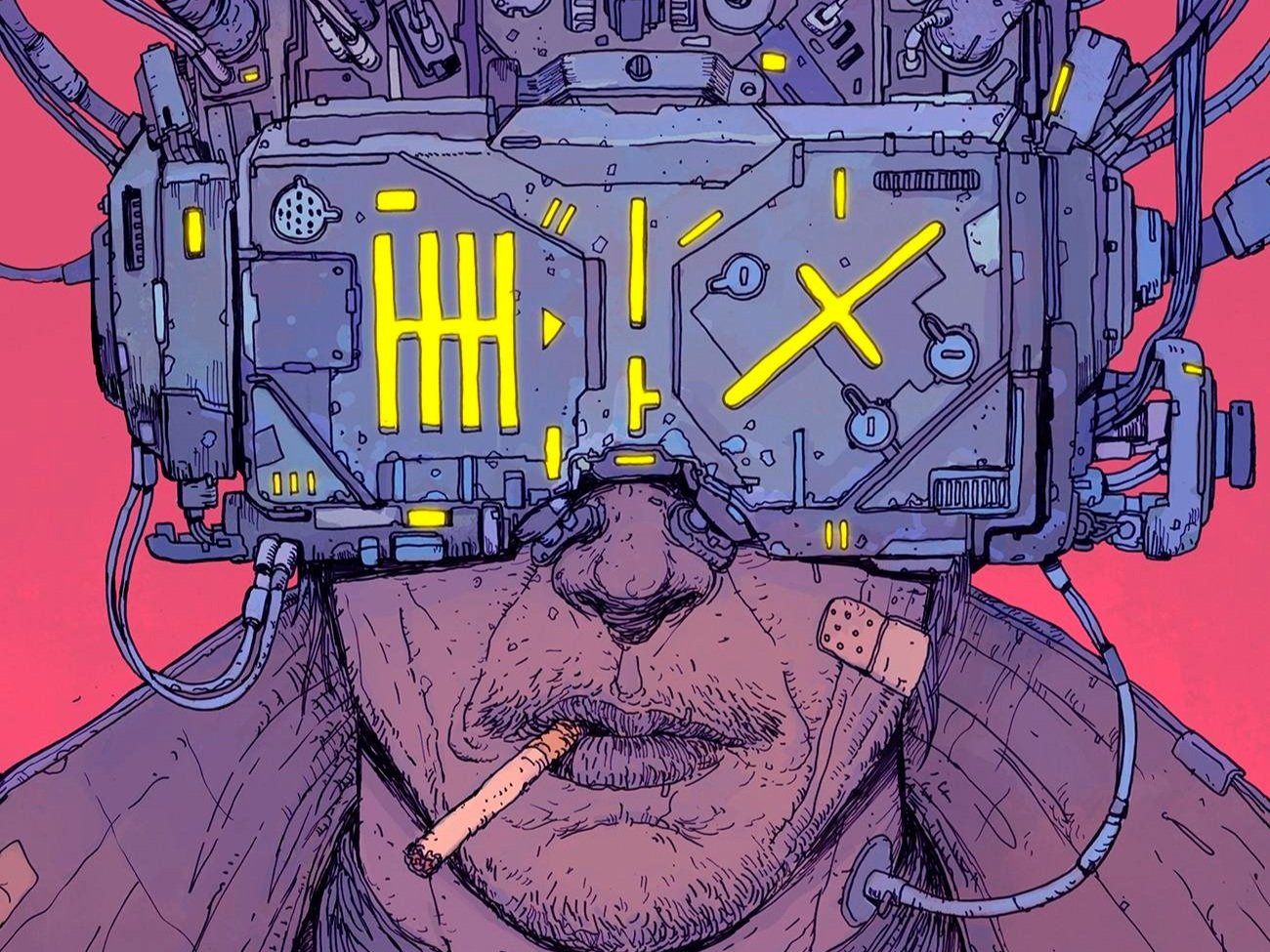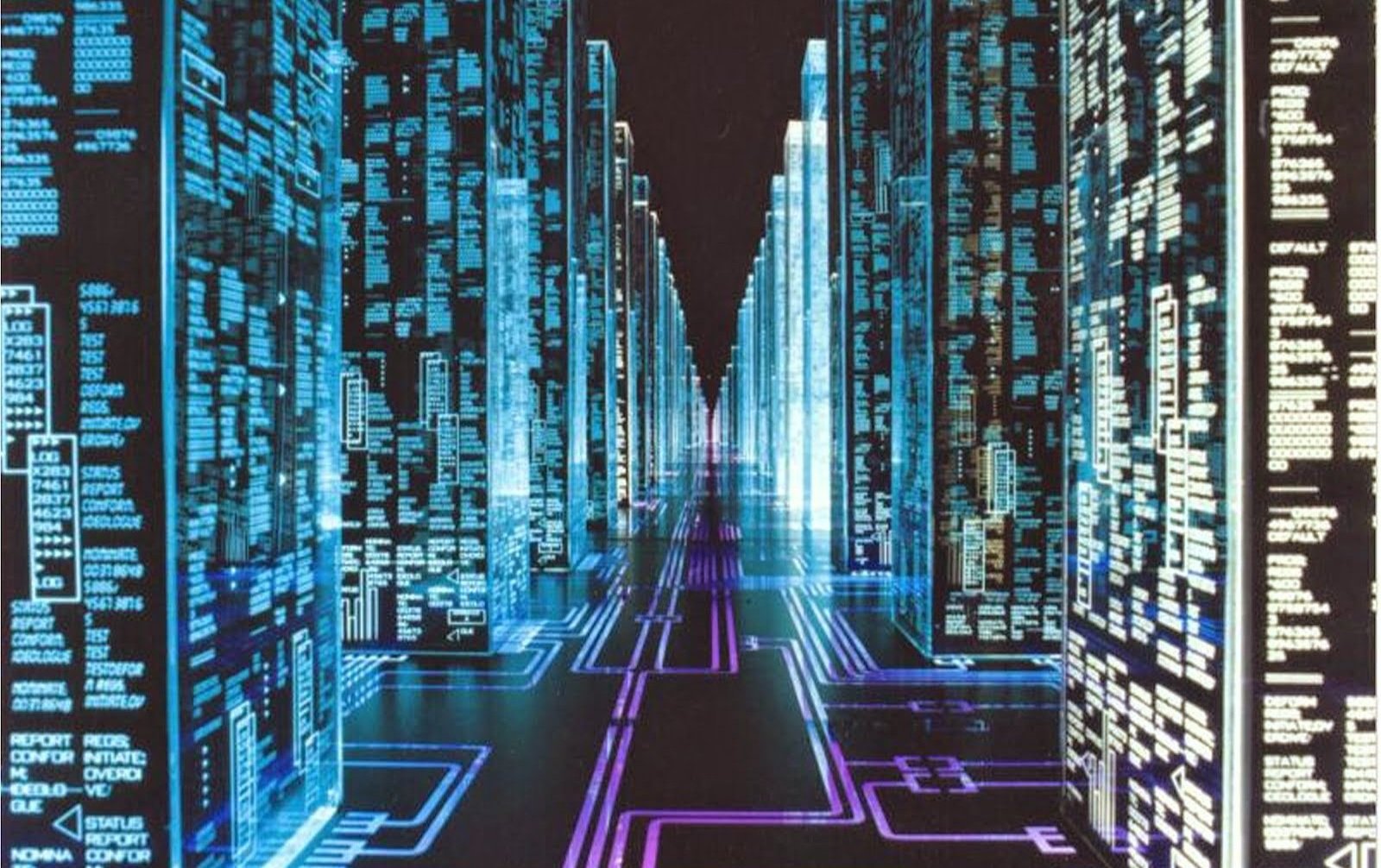NEUROMANCER - THE BIRTH OF CYBERPUNK

Ever wonder how Cyberpunk’s digital aesthetic took form? You’d be forgiven for turning your attention to film or manga when questioning its origins. Blade Runner encapsulated the noir tone and neon-fuelled aesthetic of which Cyberpunk has become synonymous, whilst Akira and Ghost in the Shell popularised techno-obsessed artistry with ground-breaking magnitude.
Whilst these are inarguably watershed moments for the genre in graphic novels and on screen, what is quintessentially Cyberpunk lies with literature. But how, you might ask, can a book shape something so intrinsically informed by tech?
By cutting burgeoning hopes and fears for computerisation with a raw-edged coolness, as authors such as Bruce Sterling, Walter Jon Williams and William Gibson figured out.
William Gibson
Each of these trailblazers cultivated the mood and defined the tropes of Cyberpunk – think wires-in-brain, robotic augmentations, leather jackets and drug binges. Yet it’s the work of the latter whose text remains a benchmark of Cyberpunk reference, with American/Canadian author Gibson’s 1984 novel Neuromancer seminal to the genre as we know it.
When Gibson penned his opening line ‘the sky above the port was the colour of television, tuned to a dead channel’ he merged reality and the digital in a way that seems almost prophetic today, as online footprints grow exponentially and internet universes creep into reality. Instead of two separate realms, there’s a ripple and blur.
Such an emphasis led Gibson to worry about his book post Blade Runner, with fears that readers would deem his Cyberpunk a rip off of Ridley Scott’s cinematic rendition. Writing on a personal blog he "figured [Neuromancer] was sunk, done for”, yet public reaction was quite the opposite, with a strong underground following leading the text to multiple literary awards and over 6.5 million sales worldwide.
Gibson’s litany of emergent techno-jargon is perhaps one of the defining features of his novel. Whilst familiar in our contemporary, terms such as ‘cyberspace’, ‘jacking-in’, ‘ICE’ and ‘the matrix’ were first introduced by Neuromancer, greatly influencing the dictionary that much of Cyberpunk borrows from and builds upon.
With a techno-heist narrative at its core, Gibson’s work follows the drug-addled antihero Case as he hacks his way through an infinite dataspace alongside an ensemble of equally untrustworthy mercenaries and thieves.
One such steely companion is ‘razor girl’ Molly Millions - a character derived from Gibson’s earlier Johnny Mnemonic - known for vision-enhancing mirrored lenses which replace her eyes, echoing the street samurai type which continually pervade Cyberpunk settings. Through Case and Molly, Gibson set out Cyberpunk archetypes without even realising, constructing the mould for edgy renegade protagonists to come.
Flitting between criminal underworlds, space habitats and endless data streams, Neuromancer paints a deeply vivid Cyberpunk universe with a dystopian brush. Locales such as the Sprawl, Night City, Chiba City and Freeside depict dense urban environments oppressed by rampant mega-corporations and techno-fetishism – places wherein subjects can only escape through the waves of cyberspace, or by coating their limbs in hardened metal.
Painting by Juan Gimenez
With enveloping settings and a rich vocabulary, Neuromancer shines like new chrome, and never ceases with action and pace. Critic Dave Langford went as far as to say Gibson’s work was ‘too frenetic, so unremitting that the reader never gets a rest’; a testament to the genre’s whirlwind capabilities, which only continued with his proceeding entries Count Zero and Mona Lisa Overdrive.
To put it simply, Neuromancer is Sci-Fi on speed - an apt way to describe ‘80s Cyberpunk as a whole.
Article by Tom Mancini
Cover image by Josan Gonzalez






